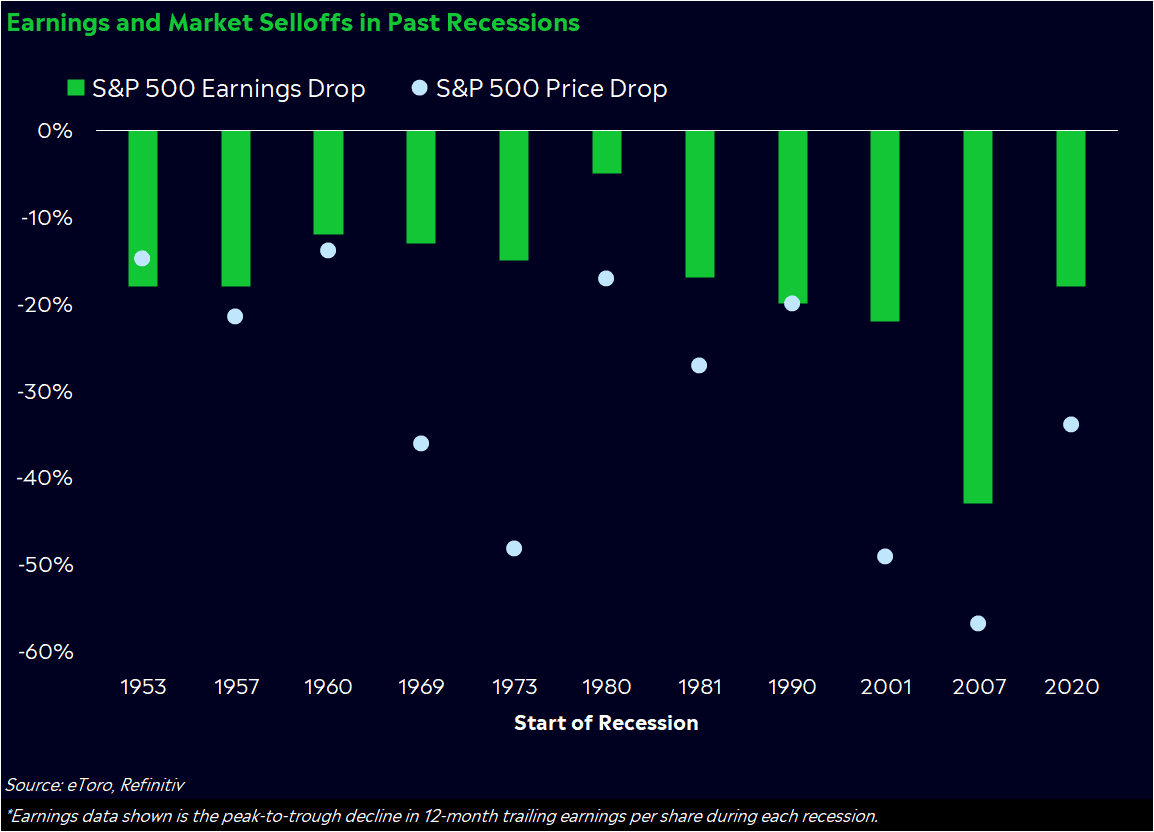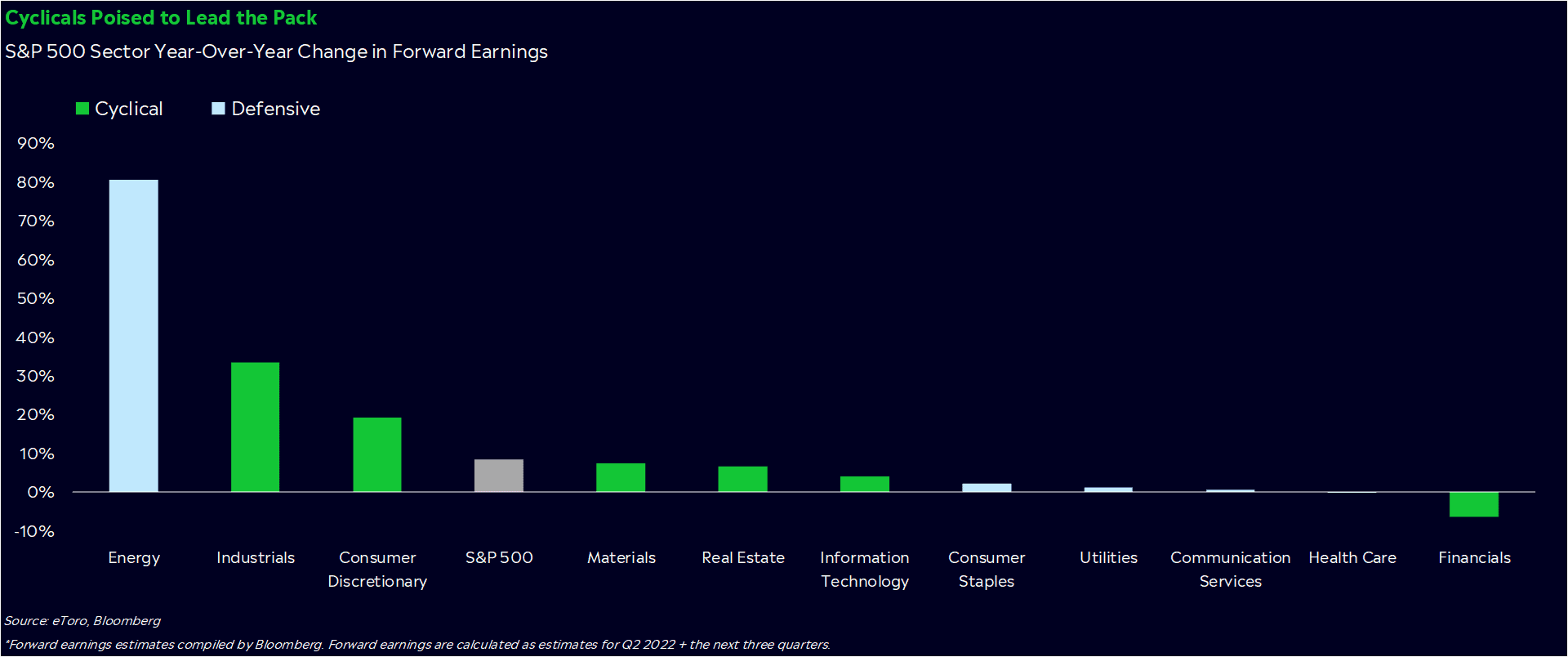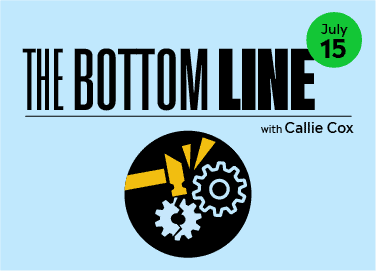As the days pass, the recessionary flames seem to be getting progressively hotter.
This past week, the June inflation report made us sweat the most. Prices climbed a casual 9.1% year over year, and markets started to prepare for a 100-basis point rate hike in a few weeks. Good luck with that, Jay Powell.
In corporate America, though, the picture looks more confusing than concerning. Expected profit growth – at least on the index level – hasn’t budged. While some companies are sounding the alarm, others seem to be doing just fine. Layoffs have started, but they haven’t matched up to the tidal wave of hiring we’ve seen this year.
Companies may be naive, and more warnings could be on the way.
But it’s also possible we’re thinking about this particular bout of weakness all wrong.

The economy vs. its companies
Many analysts – including me! – tend to think of markets and the economy as one big, living machine driven by consumer and business activity. Right now, that machine seems to be in the late stages of a business cycle. Growth is slowing, inflation is rising and the Fed is hiking. If you’re looking through this lens, you’d have a good reason to worry about a breakdown.
But that view can leave out a lot of context and nuance. We’ve discovered in the introspective days of the pandemic that everybody reacts differently to certain situations. That’s true for businesses, too. The machine may be moving one way, but the gears in the machine are all moving in different directions.
In the economy’s case, the gears are businesses of all shapes and sizes. Cyclical sectors tend to rise and fall with the economy, while defensive sectors are better known for their slow-but-steady financials regardless of what’s happening with growth. But in a recession, the story tends to be consistent no matter if you’re thinking about the forest or the trees. Stock prices fall, businesses shed jobs, profits drop and economic output declines.
Different experiences
This time around, economists are becoming convinced that we’re on the cusp of recession. Surface-level data shows this may be true. But dive a little deeper, and you’ll realize that companies have had different experiences in this rough patch – a trend that’s already defining second-quarter earnings season.
Just this week, JPMorgan kicked off big-bank earnings with a shockingly cautious tone, even though its net interest income grew 19% year over year – the biggest jump since at least 2013. The day before, Delta reported its best quarter of earnings since COVID began, and noted that inflation hasn’t dented demand yet. Differences are natural, but this season, there could be an unusually wide range of outcomes and opinions on what happens next.
So what could we see?
First, the good news: cyclicals could lead the pack in earnings growth. If you rank S&P 500 sectors by their projected earnings growth over the next year, five out of the top six sectors are cyclical, according to Bloomberg data. In other words, economically sensitive companies are expected to drive profits, which would be a tall task if we’re on the precipice of a downturn.

Changes in consumer preferences and economic trends have also led to opportunities for different companies. Yes, inflation has been a struggle for the economy, but it’s also boosted earnings projections for S&P 500 raw material and real estate companies, according to Bloomberg. Energy stocks’ profit growth is expected to lead by a mile, mainly thanks to rising gas prices. And then there’s the shift in spending from goods to travel and experiences, which could benefit the bottom lines for airlines and hotel chains.
Now, the bad news: the economy’s changing tides have hung other companies out to dry. Retailers – from high-end boutiques to big-box stores – have been vocal about rising inventories and slowing demand, primarily from consumers culling their budgets in the wake of economic angst. Financial earnings may get hurt from a flattened yield curve and waning interest in mortgages and loans (or you could hear some ominous comments, a la JPMorgan). Tech profits may have also taken a hit from the drop in discretionary spending and snarled supply chains.
Luckily, it looks like Wall Street has worked these factors into expectations, so some earnings flops may not be surprising. But in an era of asymmetric risk aversion, we may see another batch of companies get hammered on disappointing earnings details.
This season could also be a bit of a wild card with so many moving parts. The second quarter was the stock market’s worst quarter since COVID, the dollar’s strongest quarter since 2016, and the hottest for inflation since the 1980s. To some degree, we may not be able to comprehend the second-order effects of such a crazy environment. This could be a good or a bad thing, too. So far, we’ve seen companies respond to treacherous operating conditions with increased business investment and fortified balance sheets. What doesn’t break corporate America could ultimately make it stronger.
Zero-sum thinking
This earnings season, don’t let zero-sum thinking scare you off. Sector trends tell the story of a slowing economy grappling with high inflation. Companies benefitting from unusual conditions these days may find themselves in opportunistic positions – think oil companies and alternative energy investment, or industrial companies and supply chain improvement. If you’re thinking too broadly, you could miss some good stories within the machine.
That being said, there’s a chance that companies could be getting too cocky here. Keep an eye on company forecasts and executive comments at this point in the cycle. Guidance could give hints on how the company’s leaders are thinking about a quickly changing environment.
Either way, set your targets and remember your goals. They’re your ultimate guidance.
*Data sourced through Bloomberg. Can be made available upon request.



